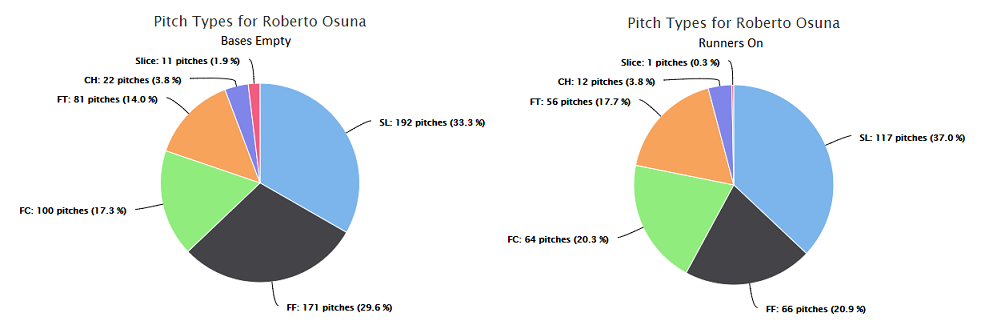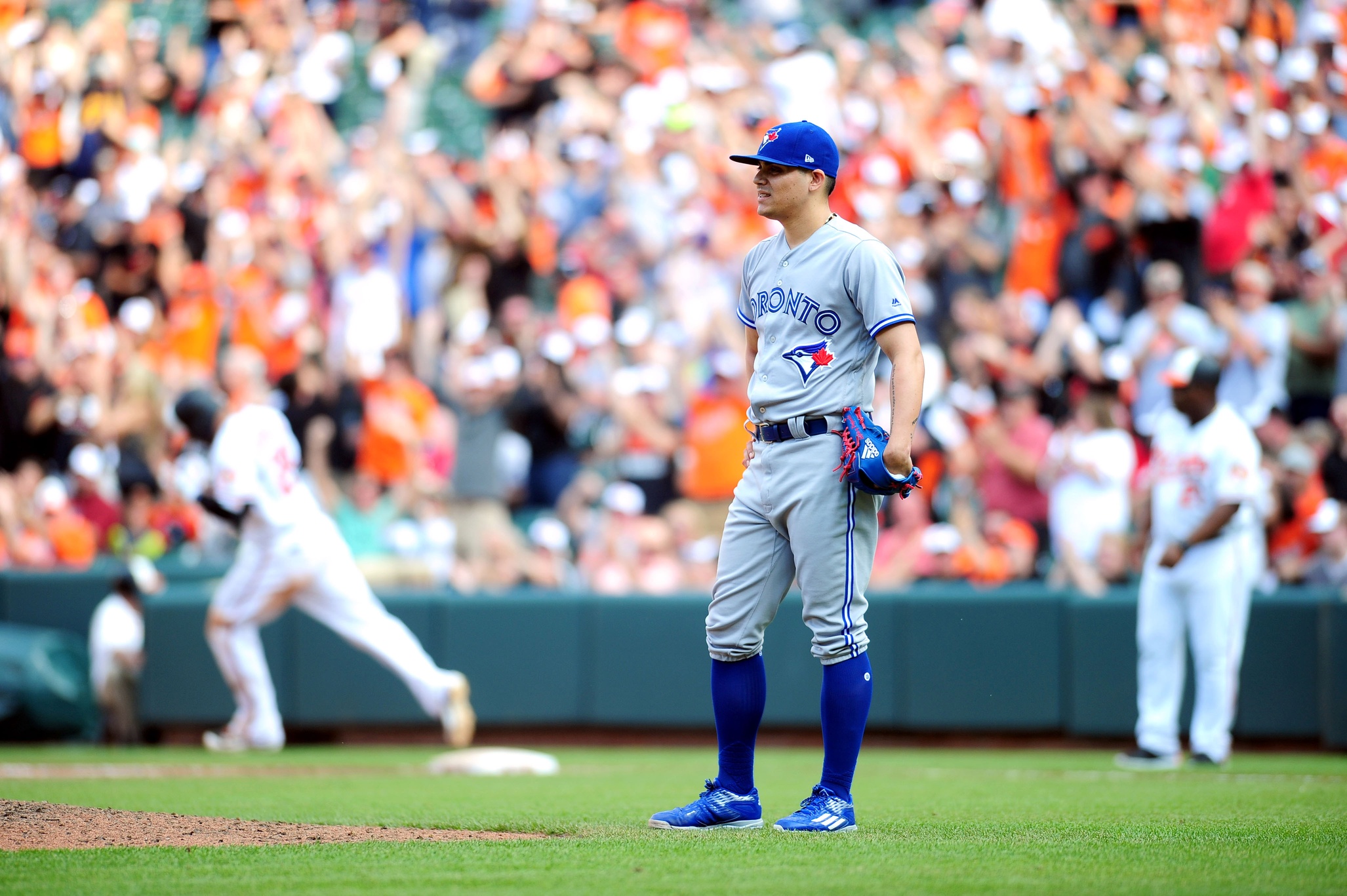By fielding independent pitching and deserved run average numbers, Blue Jays closer Robert Osuna is having one of the best seasons from a relief pitcher in team history. His 11.6 strikeouts per nine innings is eighth-best in team history among relievers. His 1.81 fielding independent pitching is topped only by Duane Ward’s 1.78 FIP in 1991. His 2.26 DRA is fourth-best in team history among relievers.
And yet Osuna is sporting a 3.66 earned run average, which ranks 72nd out of 120 relievers with over 50 innings pitched this year. So what’s the reason for that separation?
It isn’t a batting average on balls in play problem. Although his BABIP allowed is a career high, .301 vs. a .247 career average prior to this season, it is still hovering around league average. His higher BABIP allowed is due mostly to his 11 percentage point increase in ground ball percentage, which yield a higher batting average on balls in play but lower slugging percentage.
It also isn’t a long-ball problem. Osuna has allowed just three home runs on the season, fewer than Craig Kimbrel and Kenley Jansen, arguably the two best relievers in baseball. In fact, the Toronto closer has allowed just 0.46 home runs per nine innings compared to 1.09 last year. His home run per fly ball rate is just 6.1 percent, well below the league average of 13.8 percent.
So it’s not batted balls or home runs. Instead, Osuna’s DRA and FIP are much lower than his ERA because of his extreme problems with leaving runners on base. He has stranded just 59.5 percent of baserunners this year, second-worst in the major leagues among those with over 50 innings pitched, just ahead of perennial coin flip reliever, Fernando Rodney.
And while things get bad once runners reach base, they get even worse when they are in scoring position. Osuna’s strikeout rate falls to 26.1 percent when there are runners on, still a solid number but nowhere near as dominant as his 36.3 rate without any baserunners. His batting average allowed shoots up to .262 when there are runners on, once again a decent benchmark but not anything spectacular.
Once they reach second (or third) base, however, Osuna is striking out just 23.1 percent of batters and has allowed a .300 average (batting average may be out of vogue as an evaluative statistic, but 3/10 batters getting hits with runners in scoring position is still quite bad). All told, Osuna has a 1.26 WHIP when there are runners in scoring position this year.
Sequencing has also been a big issue for Osuna this year. He has allowed two or more runs in an outing seven times this year, which accounts for most of his left on base and runners in scoring position troubles.
To underscore this issue, Osuna has been absolutely dominant with the bases empty. He has struck out 36.3 percent of the batters faced when nobody is on. Batters are hitting just .174 against him in the same situation.
It’s tough to see why Osuna is having these issues, however. He certainly has a different pitch mix with runners on compared to empty bases (see below), but the pitches he is throwing more of (cutter and slider) actually get more swings and misses and allow lower batting averages than the fastball that he is abandoning.

via Baseball Savant
With hitters, it is assumed that exceptional or terrible performance with runners in scoring position will eventually stabilize relative to the players true talent level. Thankfully, it is the same story for pitchers and Osuna has never had this issue in the past. In 2016 and 2015, he posted well above average strand rates at 82.5 and 79.7 percent respectively. His strikeout rates also stayed steady with and without baserunners.
So although the Blue Jays should still be doing everything they can to clean up Osuna’s troubles with men on base, they should at the same time expect his LOB percentage to regress toward the mean. Fifty-nine innings just isn’t enough to conclude that Osuna has developed a new problem. The 143 2/3 innings he pitched prior to this season are much more predictive. Although it is something that should be monitored, Osuna should return to dominance when dealing with baserunners in addition to of his elite strikeout, walk, and home run ratios. This will help him strand runners at rates in the Kimbrel and Jansen company where he belongs, leaving the nail-biting to Diamondbacks fans watching Rodney.
Lead Photo © Evan Habeeb-USA TODAY Sports
